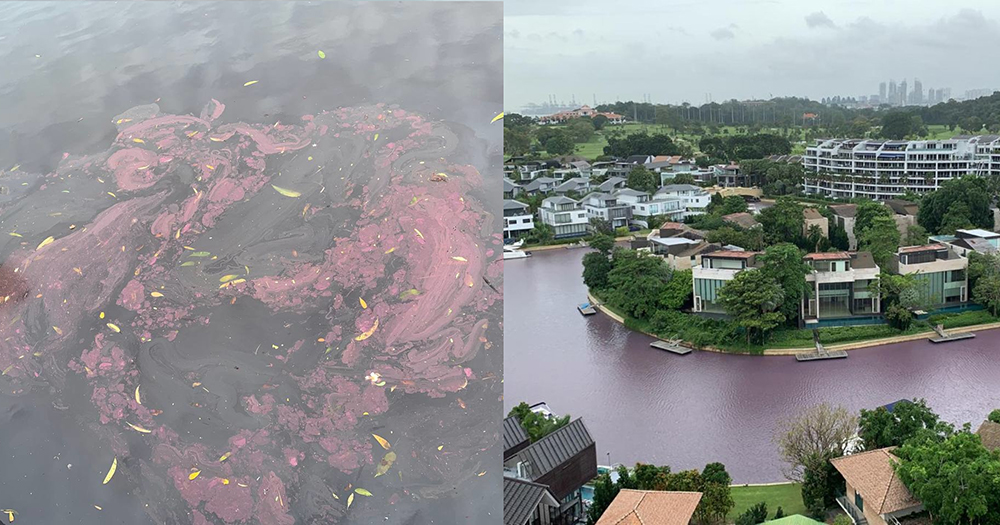A few days ago (Jan. 12), Sentosa South Cove residents were greeted by strange-smelling waters in the canal that had turned pink.
The waters, however, has largely returned to normal — grey with a slight tinge of purple — when Mothership went down to check out the situation on the morning of Jan. 14.
According to a joint-statement by the Sentosa Development Corporation (SDC) and National Environment Agency (NEA), the fish kill could be due to the change in water conditions due to recent weeks' heavy and persistent rainfall.
The agency also added that the "unpleasant odour of the waters was likely due to decomposing dead fish".
Heavy & persistent rainfall altered water conditions in Sentosa’s South Cove
The SDC and NEA, together with Sentosa Cove Resort Management (SCRM), studied water samples collected from the waterway of Sentosa’s South Cove between January 6 and 13, 2021.
SDC and SCRM also collaborated with the National University of Singapore’s (NUS) Tropical Marine Science Institute (TMSI) to further investigate the change in the colour of the waters.
The findings suggest that the recent weeks’ heavy and persistent rainfall had altered the water conditions in Sentosa’s South Cove.
Particularly, tests on the water samples had found low levels of salinity and dissolved oxygen, which may have caused the fish kill, as well as a high level of nutrients.
NEA: High nutrient level & organic content in waters triggered algal bloom, caused fish kill
NEA assessed that the high nutrient level and organic content in the waters had in turn likely triggered the algal bloom, which changed the colour of the waters.
TMSI NUS’ microscopic evaluation of the waters had found the presence of high amounts of pico-cyanobacteria, a form of algae.
The bloom could have begun prior to a visible change in colour of the waters.
The fish kill could thus also be due to the low level of oxygen caused by the cyanobacteria’s respiration or decomposition, or suffocation due to gill clogging or irritation caused by the algal bloom.
The unpleasant odour of the waters was likely due to decomposing dead fish, the statement notes.
NEA has also tested the seawater quality in the waters off Sentosa Cove and found it to be within the usual variations.
SCRM will continue to monitor the situation and explore preventive measures that could be undertaken in future.
As a precautionary measure, SCRM advises residents to continue to refrain from water sport activities in the waterway.
Totally unrelated but follow and listen to our podcast here
Top photo by Lean Jinghui, right photo by Sentosa Cove Resident
If you like what you read, follow us on Facebook, Instagram, Twitter and Telegram to get the latest updates.
